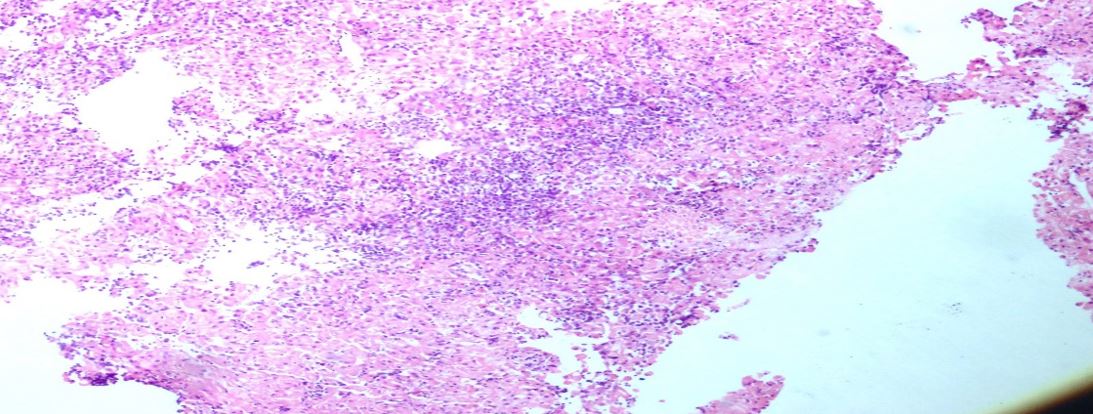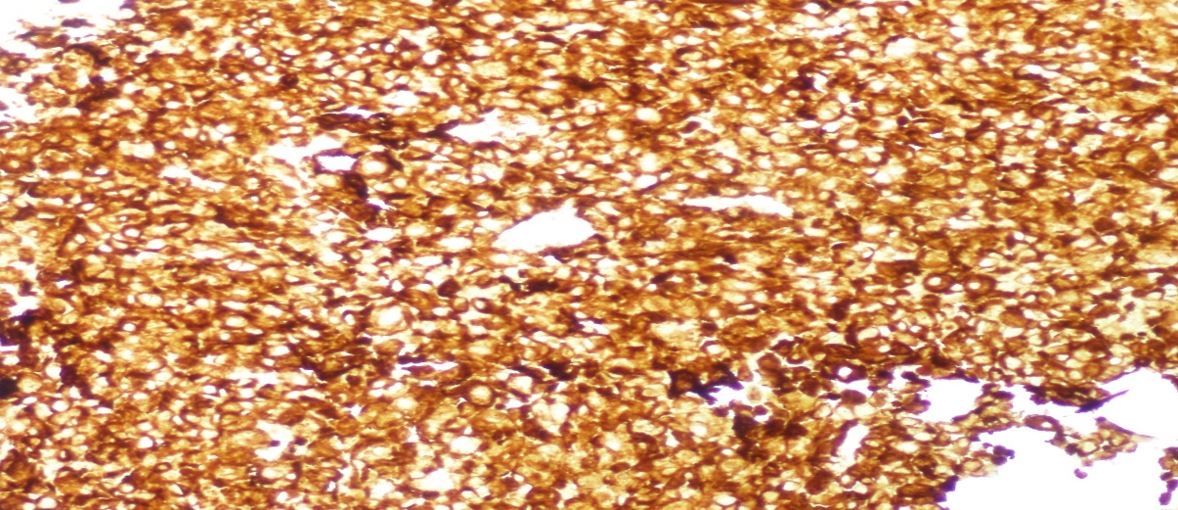Introduction
Neoplasms that exhibit sharp peaks in incidence in children younger than age 10 years, ALL neuroblastoma, Wilms tumor, hepatoblastoma, retinoblastoma, rhabdomyosarcoma, Ewing sarcoma etc Histologically, many of the malignant non-hematopoietic pediatric neoplasms are unique. In general, they tend to have a more primitive (embryonal) undifferentiated appearance and are often characterized by sheets of cells with small, round nuclei, childhood tumors have been collectively referred to as their malignant small round blue cell tumors, due to their primitive histologic appearance [1] The most frequent childhood cancers arise in the hematopoietic system, nervous tissue, soft tissues, bone, and kidney. This is in sharp contrast to adults, in whom the skin, lung, breast, prostate, and colon are the most common sites. This study analyzed blue cell tumour, and metastasis to bone marrow, over 5 years (2006-2011), from a regional cancer centre in India. The majority of SRCT were Neuroblastoma which metastasised to bone marrow in the current study.
Materials and Methods
In Kidwai Cancer Hospital, Bengaluru, India, between January 2006 to January 2011, it was a retrospective observational study. All suspected nonhematological malignancies involving marrow were included in the study.. lymphoma was not included in this study. Bone marrow was obtained from the posterior iliac crest by Jamshidi needle. Bone marrow smears and peripheral smears and stained by Romanowsky stains, Bone marrow biopsies were stained with hematoxylin and eosin. Immunohistochemistry followed in a few cases. Patient’s name, age, gender, diagnosis, and clinical, radiological findings were recorded. Children age<14 years. The bone marrow was considered to be ‘involved by the tumour’ if tumour cells were detected in bone marrow aspirate, biopsy, or both.
Results
The bone marrow examinations, of suspected SRCT /solid malignancies patients were evaluated. Out of 574 total cases, 240 were pediatric cases and 334 were adult cases.(Table 1)
Table 1: Patient Information
| Number of cases | Number of positive cases |
|---|
| Pediatric cases | 240 | 34 |
| Adult cases | 334 | 31 |
| Total | 574 | 65 |
Bone marrow was involved in 65 patients(fig1).

Figure 1: Bone marrow smear showing small cells with hyperchromatic nucleus and increased N/C ratio.

Figure 2: H&E 20X Tissue biopsy showing small cells in fibrillary matrix
Tissue confirmation from the primary site was available in 40 cases. (fig 2) Bone marrow involvement was present in 34 cases, in children, and 31 adult cases, showed metastasis, primarily from the breast and prostate. Neuroblastoma was the most common malignancy, which involved the bone marrow among pediatric cases( Table 2), followed by Ewing’s sarcoma& retinoblastoma.
Table 2: Distribution of bone marrow involvement among pediatric patients
| Diagnosis | Number of cases |
|---|
| Neuroblastoma | 14 |
| Ewing’s sarcoma | 12 |
| Retinoblastoma | 6 |
| Rhabdomyosarcoma | 2 |
| Total | 34 |
Commonest was the Neuroblastoma which metastasised to bone marrow in the current study. IHC confirmation was available in most cases. (fig 3). Anaemia was the common abnormality due to bone marrow involvement, the leucopenia/neutropenia and thrombocytopenia followed respectively. Pancytopenia was found in 8 children. Normal blood pictures, in the majority of patients, confirmed haematological abnormality may not be always present in bone marrow metastasis. IHC confirmation was available in most cases.(fig3)

Figure 3: IHC positive for synaptophysin
Discussion
Bone marrow involvement in non-haematological solid tumors is rare. Disseminated malignant cells from the primary tumor, are the cause of metastases to bone marrow. Detection of metastatic tumors in the bone marrow is mandatory, for staging and has prognostic value. Rolf et al showed NB frequently metastatic [1] [2]. Molenar et al. studied sequencing of neuroblastomas [3]. Diligent Morphological examination of the bone marrow aspiration with ancillary tests such as immunohistochemistry aids in detecting the bone marrow involvement early, also still, remains the easiest, cheapest, and least time-consuming procedure for the diagnosis of clinically suspected bone marrow involvement.[3&4]. Excess secretion of catecholamines may be noted.


 ©
©